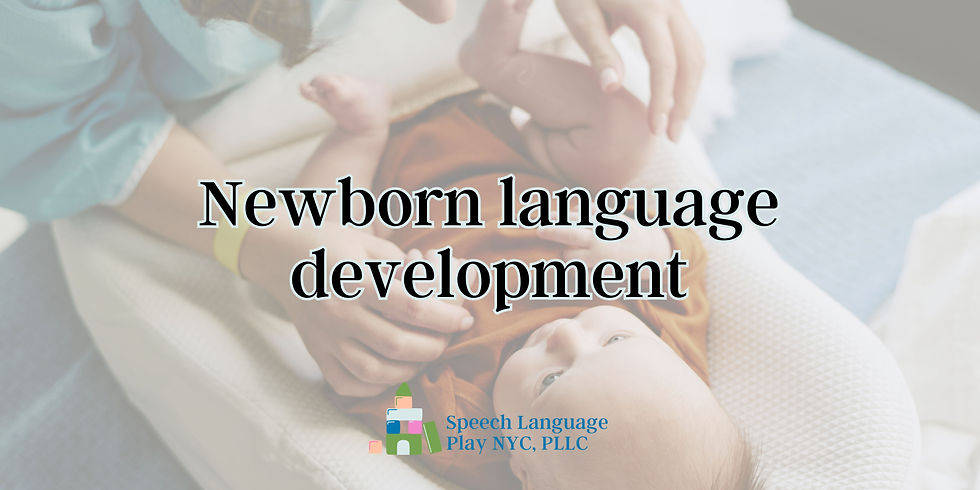Language Development of Gestalt Language Processors
- Meghan O'Grady

- Feb 21, 2024
- 3 min read

Let's talk about the language development of Gestalt language processors (GLPs). It's important to keep in mind that a GLP will ALWAYS be a GLP. What does this mean?
GLPs are people who develop language with a top-down approach. They initially produce "chunks" of language, also referred to as gestalts or delayed echolalia, then learn to break those chunks down into flexible language that can be mixed and matched. For some gestalt language processors, they can go through this process independently, while for others, support from a speech therapist may be helpful. The ultimate goal for many gestalt language processors is to work toward self-generated grammar- which is the same goal for all people developing language!
Let's talk a bit more about identifying a gestalt language processor. Rather than babbling and using first words, GLPs may use intonationally-rich language, but not true words initially. For example, GLPs might use the tune of The Wheels on the Bus, but not actually produce the distinct words in the lyrics, as their "first words." GLPs might also use chunks of language to express themselves from a young age. This language often comes from books, television shows or movies, music or other people and is referred to as Delayed Echolalia. So while an "Analytic Language Processor" might say mommy, ball or bye-bye as their first words, a gestalt language processor may say an entire gestalt such as and they all fall down or sound the Octo-alarm we have a problem.
Gestalts or delayed echolalia are the first stage in Gestalt Language Development. The initial goal is to support a GLP in producing enough gestalts to communicate a variety of functions (e.g., shared joy, rejection, commenting), and then to start to break down these gestalts, or mitigate them, to be able to mix and match language. For more on the stages of gestalt language development, check out this post on the topic.
As a child progresses through the stages of Gestalt Language Development, they might continue to use their initial gestalts to communicate. This is okay and expected! Our goal is never to make a GLP, not a GLP, but rather introduce ways to mix and match language to make language use more flexible.
So, why do gestalt language processors continue to use gestalts, even when most of their language is in a later stage of development? Gestalts can be regulating, comforting, and more easily accessible in new situations. GLPs may lean into their gestalts as a way of seamlessly expressing a thought or idea in a moment when flexibly generating novel grammar is not as accessible. From a therapy perspective, speech therapists provide language support to GLPs at the stage they are producing the majority of their language. So a child may be producing self-generated grammar the majority of the time (Stage 4) and then occasionally using a gestalt or delayed echolalia (Stage 1) to express a thought. The speech therapy provided will continue to focus on the stage where the majority of their language is being produced.
It's important to remember that as speech therapists or anyone supporting GLPs, our goal isn't to change their way of using language but rather to support them in their language development. To learn more about supporting gestalt language processors and their language development, check out this blog post.




Comments